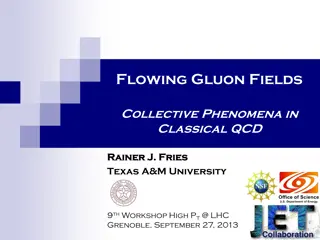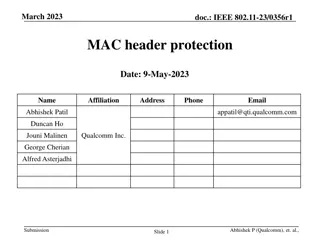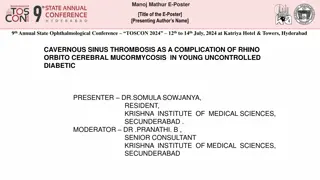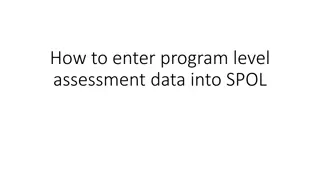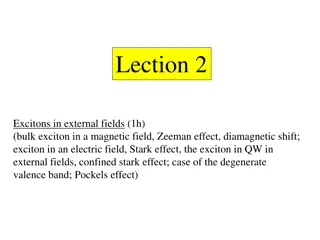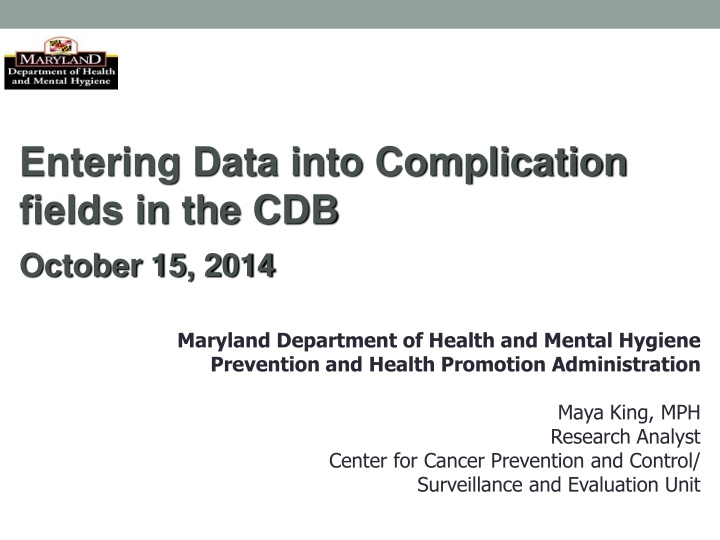
Entering Data into Complication Fields in the CDB
Complications defined as adverse events during or after a procedure can have significant implications. Learn how to determine complications, the role of the client database (CDB), and where to enter specific complication data.
Download Presentation

Please find below an Image/Link to download the presentation.
The content on the website is provided AS IS for your information and personal use only. It may not be sold, licensed, or shared on other websites without obtaining consent from the author. If you encounter any issues during the download, it is possible that the publisher has removed the file from their server.
You are allowed to download the files provided on this website for personal or commercial use, subject to the condition that they are used lawfully. All files are the property of their respective owners.
The content on the website is provided AS IS for your information and personal use only. It may not be sold, licensed, or shared on other websites without obtaining consent from the author.
E N D
Presentation Transcript
Entering Data into Complication fields in the CDB October 15, 2014 Maryland Department of Health and Mental Hygiene Prevention and Health Promotion Administration Maya King, MPH Research Analyst Center for Cancer Prevention and Control/ Surveillance and Evaluation Unit
Complications Defined A Complication is an adverse event occurring in preparation of, during, after a procedure, or in relation to a procedure (including treatment) within 30 days of the procedure Examples include, but are not limited to: Colonic perforation Bleeding or abdominal pain requiring hospitalization Drug reaction that may require an ER visit Stroke or myocardial infarction Death Prevention and Health Promotion Administration October 15, 2014 2
Determining Complications If a situation arises that is out of the ordinary, particularly if it leads to additional costs or provider visits, and/or you are uncertain as to whether it is a complication, consult the LHD practitioner providing medical oversight of the CPEST program and the appropriate Medical Case Manager(s) (i.e. obtain input from the clinical providers) for a determination. Contact CCPC clinical staff if you re unable to make a determination or if further guidance is needed. Prevention and Health Promotion Administration October 15, 2014 3
Client Database (CDB) The Client Database, or CDB, is the online data collection system used by local CPEST staff to enter clinical data for clients receiving services paid for fully, or in part, by CRF funds through the CPEST program Prevention and Health Promotion Administration October 15, 2014 4
Entering Data: What and Where What: All client-specific complications data that meet the CPEST definition should be entered into the CDB Where: Complications data should be entered in the complications fields for the procedure and/or treatment for which data is being entered Prevention and Health Promotion Administration October 15, 2014 5
Location of Complication Fields Most modules and/or Additional Procedure pages have complication fields associated with it that now look like this: Prevention and Health Promotion Administration October 15, 2014 6
Exception: Location of Complication Fields Complications arising from prescreening exams and/or visits should be recorded in the Significant Findings section on page 3. Prevention and Health Promotion Administration October 15, 2014 7
Complications Field 1. For Complications of Procedures, click the Yes radio button if the client has a complication(s) Prevention and Health Promotion Administration October 15, 2014 8
Complications Field 2. For Complication Type, select all complications from the list provided that are applicable to the client Prevention and Health Promotion Administration October 15, 2014 9
Complications Field Please note that multiple complication types can be selected for one client Prevention and Health Promotion Administration October 15, 2014 10
Complications Field 3. If Other is selected, please provide descriptive information for this complication in the adjacent text field Prevention and Health Promotion Administration October 15, 2014 11
Complications Field 3. In the text field for Additional information re: complications, supplementary information about the complication can be provided, if necessary Prevention and Health Promotion Administration October 15, 2014 12
Major Complications A major complication is defined as a: Perforation Hospitalization Bleeding that requires transfusion Bleeding that requires unplanned endoscopic intervention Surgery Heart attack Stroke or Death that occurs within 30 days following the procedure or treatment. Prevention and Health Promotion Administration October 15, 2014 13
Major Complications Local CPEST program staff should provide verbal notification of any major complication by telephone, fax, or e-mail to the Cigarette Restitution Fund (CRF) Programs Unit Nurse Consultant at DHMH/CCPC within 24 hours of being notified. The CRF Program Manager may be contacted in the absence of the Nurse Consultant. Local CPEST program staff should also inform the LHD practitioner providing medical oversight of the CPEST program for review of the case. Prevention and Health Promotion Administration October 15, 2014 14
Major Complications CCPC staff may call local CPEST program staff to collect additional information regarding major complications in your screening programs such as, procedures and costs of follow-up for complications Prevention and Health Promotion Administration October 15, 2014 15
Contact Maya King, MPH Maya.king@maryland.gov (410-767-2033) Prevention and Health Promotion Administration October 15, 2014 17
Prevention and Health Promotion Administration http://phpa.dhmh.maryland.gov Prevention and Health Promotion Administration [Date] 18



